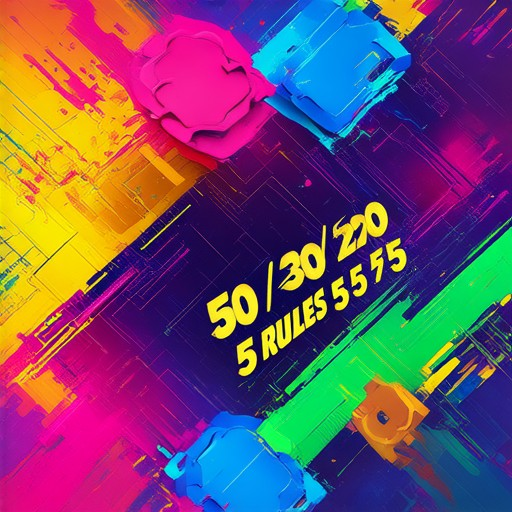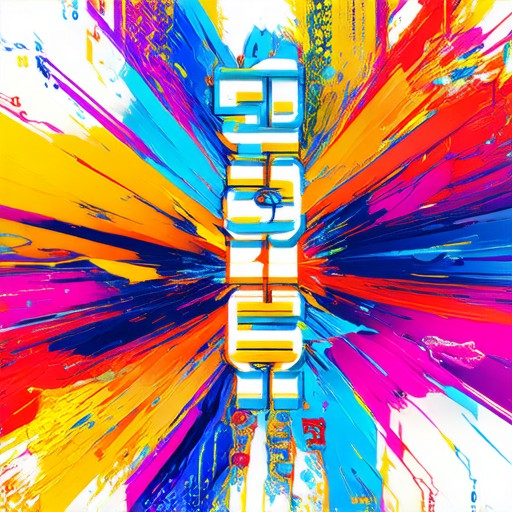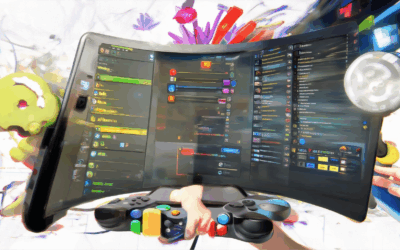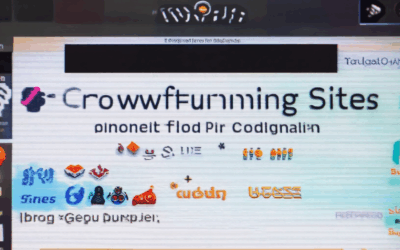In today’s digital age, social media has emerged as a powerful tool for game developers and marketers to connect with audiences, foster communities, and drive engagement. Whether you’re launching a new mobile game, indie title, or AAA blockbuster, optimizing your social media strategy is crucial for success. This article delves into proven tactics and frameworks like the 50/30/20 and 5/5/5 rules to help you maximize your game promotion efforts on platforms like Reddit, TikTok, and Instagram. By understanding the best practices and leveraging the right channels, you can elevate your game’s visibility, build a loyal fanbase, and achieve long-term success in the competitive world of gaming.
Key Takeaways: Mastering Game Promotion on Social Media
- Leverage Social Media Platforms: Effectively use Twitter, Facebook, Instagram, and TikTok to share trailers, gameplay, and engage with followers, building a vibrant online community.
- Optimize YouTube Channel: Upload gameplay footage and developer diaries with SEO-friendly titles and collaborate with influencers for broader reach.
- Engage in Streaming Platforms: Participate on Twitch and YouTube Gaming with live interactions and partner with influencers to boost visibility.
- Build a Professional Website: Create a dedicated site with SEO techniques, newsletters, and detailed game showcases.
- Create Shareable Content: Develop memorable mascots, memes, and offer rewards to incentivize sharing and brand recognition.
- Engage with Your Community: Actively respond to feedback, host events, and provide in-game rewards to foster loyalty and connection.
- Collaborate with Influencers and Press: Partner with creators for promotion and distribute press kits with game info to secure media coverage.
- Invest in Paid Advertising: Run targeted ads on Google, Facebook, and Twitch, using retargeting campaigns to re-engage interested visitors.
- Build and Nurture Communities: Establish forums, share user-generated content, and organize events to create a passionate fanbase.
- Monitor and Adapt: Use analytics and A/B testing to refine strategies, ensuring continuous improvement and alignment with audience needs.
- Apply the 50/30/20 and 5/5/5 Rules: Balance content creation across platforms and dedicate time to core activities for maximum impact.
- Engage with Online Communities: Participate in Reddit, Steam, and forums to gather feedback, network, and expand your reach.
- Start a Blog or Website: Document your journey, use SEO, and write guest posts to drive traffic and visibility.
- Run Giveaways and Contests: Attract attention with prizes related to your game, enhancing engagement and buzz.
- Optimize for Search Engines: Use relevant keywords and submit to directories to improve your site’s visibility.
- Build an Email List: Offer incentives like beta access to grow your list and send regular updates to keep stakeholders engaged.
- Encourage User-Generated Content: Feature mods, fan art, and levels to foster a sense of ownership and community involvement.
- Network with Influencers and Attend Events: Collaborate for promotion and showcase your game at virtual events to expand your network.
- Utilize Free Advertising Platforms: Post listings on Craigslist and community boards to reach a wider, albeit targeted, audience.
- Gather Audience Feedback: Use insights post-performance to enhance future productions and tailor your approach to audience preferences.
These strategies encapsulate the essence of effective game promotion, blending traditional and digital strategies to maximize visibility and engagement.

Best Social Media Platforms for Promoting Games
Promoting games effectively requires leveraging platforms that cater to different audiences and content types. Here’s a breakdown of the top social media platforms ideal for game promotion:
- YouTube : Ideal for video content, including gameplay trailers, developer diaries, and let’s plays. Its vast user base and search functionality make it a powerful tool for driving traffic and engagement.
- Twitch : Perfect for live streaming, allowing developers to showcase gameplay in real-time. Engaging with viewers can build a loyal community and foster discussion around the game.
- TikTok : Great for creating short, attention-grabbing videos that can quickly go viral. This platform is particularly effective for targeting younger audiences with fun and energetic content highlights.
- Instagram : Focuses on visual storytelling, making it ideal for sharing game screenshots, concept art, and behind-the-scenes content. Building a visually appealing brand presence can attract followers and create buzz.
- Facebook : Utilize its active gaming communities and groups to target niche audiences. Facebook ads can also be strategically used to reach broader demographics interested in specific game genres.
- Discord : A community-driven platform where developers can host discussions, Q&A sessions, and game previews. Engaging with fans in dedicated servers can foster loyalty and provide valuable feedback.
- Reddit : Home to numerous gaming subreddits, participating in these communities can help increase visibility. Submitting content and hosting AMAs (Ask Me Anything) events can engage potential players and gather valuable insights.
- LinkedIn : While less common, LinkedIn is useful for B2B connections and collaborations. Sharing updates and partnership opportunities can appeal to industry professionals and investors.
- Twitter : Excellent for quick updates, news, and engagement through hashtags and mentions. It’s ideal for breaking game-related news and attracting attention from a broad audience.
To maximize effectiveness, consider combining platforms based on your target audience and game type. Tailor content to each platform, cross-promote across channels, and engage actively with your audience to build a robust online presence.
What is the 50-30-20 rule for social media?
The 50-30-20 rule is a popular framework used in social media marketing to optimize content distribution and engagement. Here’s a breakdown of the rule:
50% – Video Content
- Focus on creating high-quality video content, as videos tend to perform exceptionally well on platforms like YouTube, TikTok, and Instagram Reels.
- Types of video content include product demos, testimonials, behind-the-scenes footage, and educational videos.
- Videos are highly engaging and consume more attention compared to other forms of content.
30% – Image and Infographic Content
- Use eye-catching images, infographics, and visual graphs to convey information quickly.
- Visual content helps in capturing attention and conveying complex ideas in a simple manner.
- Platforms like Instagram, Pinterest, and Twitter benefit greatly from this type of content.
20% – Written Content
- Reserve this portion for written posts, articles, and text-based updates.
- This includes blog posts, news updates, thought leadership pieces, and engaging captions for photos.
- Written content allows for storytelling and sharing of expertise, which can drive engagement and trust.
By allocating your content according to the 50-30-20 rule, you can maximize your social media presence and achieve better engagement rates across your platforms.

The 5 5 5 Rule on Social Media
The 5 5 5 rule is a simple yet effective guideline for crafting compelling social media posts. Here’s a breakdown of what each component entails:
- Five Minutes : Dedicate just five minutes to crafting a post. Quality over quantity is key, and this ensures your message is clear and impactful.
- Five Words : Keep your text concise, focusing on just five words. This forces you to be precise and guarantees your audience can grasp your message quickly.
- Five Clicks : Encourage engagement by adding only five clickable elements, such as links, hashtags, or calls-to-action. This draws attention and drives interaction.
By following the 5 5 5 rule, you can create posts that are easy to digest, visually appealing, and highly shareable. Remember to always tailor your content to your target audience and monitor engagement to refine your approach. Indie Dev Games

How to Promote a Game
Promoting a game involves a multifaceted approach that leverages various channels and strategies to maximize visibility and engagement. Here’s a step-by-step guide to effectively market your game:
- 1. Leverage Social Media Platforms
- Create engaging content such as trailers, gameplay highlights, and developer diaries on platforms like Twitter , Facebook , and Instagram .
- Post regularly and interact with followers to build a community.
- Utilize TikTok for short-form videos that capture the game’s fun aspects.
- 2. Optimize Your YouTube Channel
- Upload gameplay footage, developer vlogs, and behind-the-scenes content.
- Use descriptive titles and meta-tags with keywords for better searchability.
- Collaborate with gaming influencers to reach a wider audience.
- 3. Engage in Streaming Platforms
- Participate in live streaming on platforms like Twitch and YouTube Gaming .
- Interact with viewers during streams to build connections.
- Partner with established streamers to tap into their existing fan base.
- 4. Build a Professional Website
- Create a dedicated website showcasing game features, screenshots, and updates.
- Include a newsletter signup form to gather potential customer emails.
- Use SEO techniques to improve your site’s ranking on search engines.
- 5. Create Shareable Content
- Develop memorable mascots, logos, and taglines that stick with players.
- Produce shareable content like memes, GIFs, or funny video clips.
- Incentivize sharing by offering rewards or recognition for promoters.
- 6. Engage with Your Community
- Respond to player feedback and incorporate it into your development process.
- Host regular community events, tournaments, or Q&A sessions.
- Offer in-game rewards or exclusive content for active community members.
- 7. Collaborate with Other Creators
- Partner with other game developers or influencers for cross-promotion.
- Collaborate on joint projects or co-marketing campaigns.
- Attend gaming events and conventions to network and showcase your game.
- 8. Utilize Press and Influencers
- Reach out to gaming bloggers, journalists, and influencers for coverage.
- Provide press kits with game information, screenshots, and download links.
- Host preview events or demos for select media outlets.
- 9. Invest in Paid Advertising
- Run targeted ads on platforms like Google Ads, Facebook Ads, and Twitch Ads.
- Focus on demographics likely to be interested in indie games.
- Use retargeting ads to re-engage visitors who showed initial interest.
- 10. Build a Community Around Your Game
- Establish a forum or Discord server for players to discuss and connect.
- Share user-generated content like mods, fan art, and custom levels.
- Organize community-driven events or competitions.
- 11. Monitor and Adapt
- Track analytics to measure the effectiveness of your marketing efforts.
- Use A/B testing to refine your strategies based on performance data.
- Stay updated on gaming trends and adapt your marketing approach accordingly.
How to Promote Your Game for Free
Promoting your game doesn’t have to cost a dime with the right strategies. Here’s a step-by-step guide to effectively market your game without spending money:
1. Leverage Social Media Platforms
- Twitter: Share updates, behind-the-scenes content, and teasers about your game. Engage with followers by responding to comments and messages.
- Instagram: Post eye-catching images and short videos showcasing your game’s visuals and gameplay.
- Facebook: Create a page dedicated to your game and share news, updates, and interact with fans.
- YouTube: Upload gameplay trailers, developer diaries, and let players see the game in action.
- Twitch: Stream your game development process and engage with viewers to build a community around your project.
2. Utilize Online Communities
- Reddit: Find subreddits related to gaming and your genre. Share your progress, ask for feedback, and participate in discussions.
- Steam Community: Join forums and share your game concept or early builds to gather feedback and interest.
- Gaming Forums: Engage in communities like Kongregate, TIGSource, or GameDev.net to network with fellow developers and players.
3. Start a Blog or Website
- Create a blog to document your game development journey. Share insights, challenges, and milestones to attract interested readers.
- Publish articles on platforms like WordPress, Medium, or Blogger. Use SEO techniques to improve visibility.
- Write guest posts for gaming websites to reach a broader audience and drive traffic to your site.
4. Collaborate with Others
- Partner with other indie developers to co-promote each other’s games. Cross-promotion can help both parties gain visibility.
- Join game development groups or collectives to collaborate on projects and share resources.
5. Engage in Competitions and Events
- Participate in game jams or hackathons to showcase your skills and gain exposure. Winning or placing high can lead to media coverage.
- Enter competitions like the Indie Game Showcase or Game Awards to potentially win recognition and prizes.
6. Run Giveaways and Contests
- Host giveaways on social media platforms or forums to attract attention to your game. Offer prizes related to your game to encourage participation.
- Use platforms like Twitter, Reddit, or Discord to manage and promote your contest.
7. Optimize for Search Engines
- Use SEO techniques to improve your website’s ranking on search engines. Research relevant keywords and incorporate them naturally into your content.
- Submit your game to free indexing sites and directories to increase your chances of being discovered.
8. Build an Email List
- Collect email addresses through your website or social media channels. Send newsletters with updates, exclusive content, and upcoming events.
- Offer incentives like beta access or in-game rewards to encourage sign-ups.
9. Encourage User-Generated Content
- Allow players to create mods, fan art, or custom levels for your game. Feature the best submissions on your website or social media.
- Engage with the community by commenting on their creations and fostering a positive environment.
10. Network with Influencers
- Reach out to popular streamers and YouTubers who focus on indie games. Offer them a chance to play your game in exchange for promotion.
- Collaborate with influencers on a shoutout-for-shoutout basis, ensuring mutual benefits.
11. Attend Virtual Events
- Participate in virtual game conventions and expos to network with other developers and players. Many events are free or low-cost.
- Set up a booth or simply attend as a spectator to connect with others in the industry.
12. Use Free Advertising Platforms
- Post your game listing on free advertising sites like Craigslist or Freecycle, though this may be less targeted.
- Share your game on community boards and local event notices to reach a wider audience.
Start Today
Don’t wait—begin implementing these strategies today. Consistency and engagement are key to building a loyal player base. Whether it’s through social media, community involvement, or creating quality content, promoting your game for free is achievable with dedication and creativity.

How to Publicize a Play
Publicizing a play involves a combination of strategic planning and creative outreach to maximize visibility and attract audiences. Here’s a step-by-step guide to effectively promote your play:
- Identify Your Audience:** Understand who is likely to appreciate your play. Tailor your promotional efforts to demographics and interests that align with the play’s theme or content.
- Utilize Social Media:** Leverage platforms like Facebook, Instagram, Twitter, and TikTok to share trailers, behind-the-scenes content, and sneak peeks. Post consistently to maintain engagement.
- Create an Online Presence:** Build a dedicated website or landing page with all necessary details, including dates, times, location, ticket prices, and a secure payment option (e.g., Square, Stripe).
- Distribute Press Releases:** Write and distribute press releases to local newspapers, radio stations, and online platforms. Include high-quality images and a compelling headline to capture attention.
- Engage with Influencers:** Offer free tickets or exclusive access to influencers, bloggers, and critics in exchange for promotion on their platforms.
- Collaborate with Local Businesses:** Partner with nearby establishments to promote your play through advertisements, discounts, or shared events.
- Host a Launch Party:** Organize an event to officially launch your play, inviting guests for an exclusive preview and Q&A session with the cast and crew.
- Offer Incentives:** Provide discounts, early bird tickets, or group rates to encourage advance purchases and increase attendance.
- Use Email Marketing:** Build an email list and send regular updates, promotions, and reminders to keep potential attendees informed and engaged.
- Participate in Local Events:** Attend or showcase your play at local fairs, festivals, or art exhibitions to reach a broader audience.
- Solicit Feedback Post-Performance:** After the play, gather audience feedback to improve future productions and gain valuable insights into audience preferences.
By combining these strategies, you can effectively reach your target audience and create meaningful connections that drive attendance to your play.




0 Comments